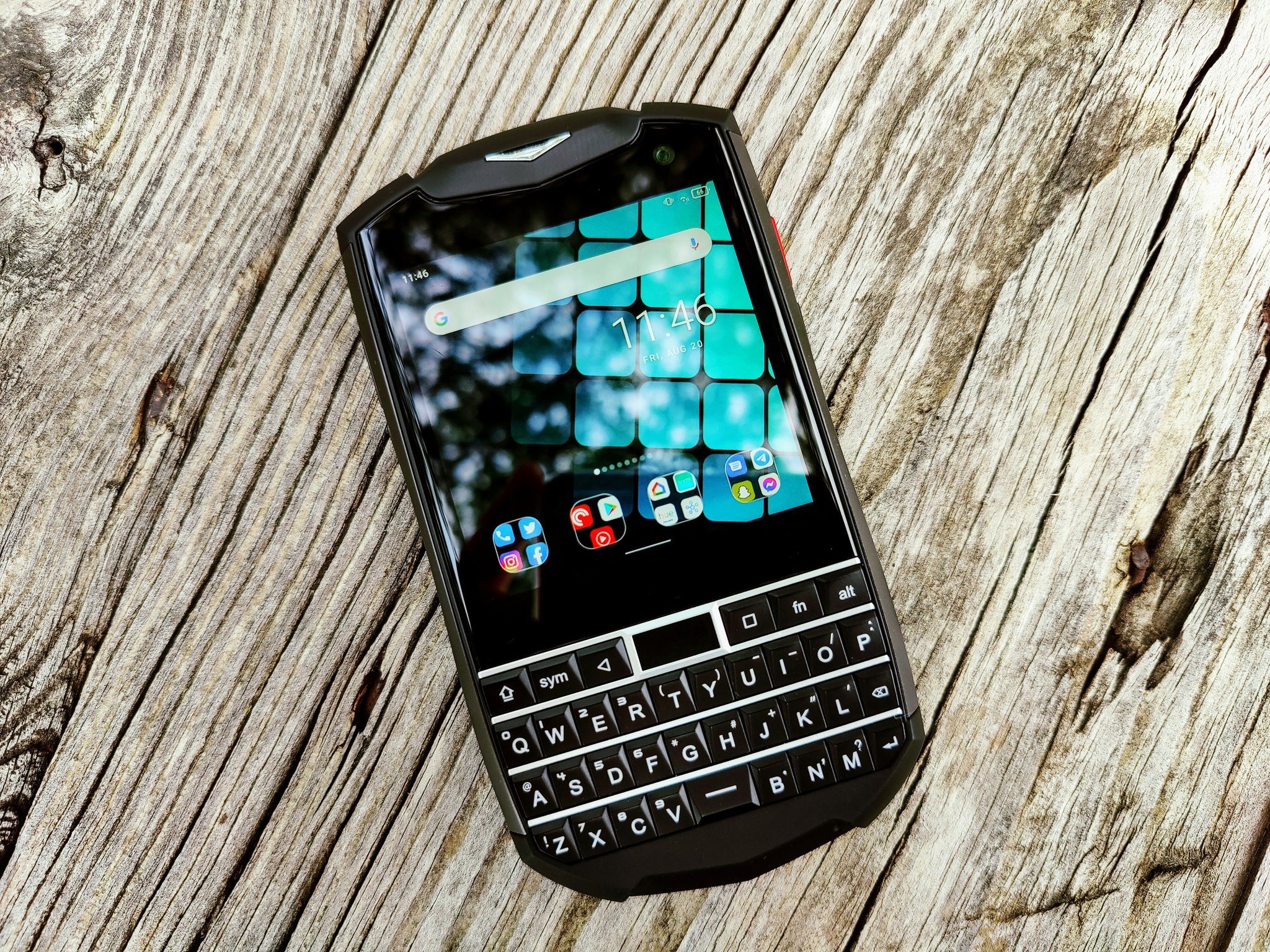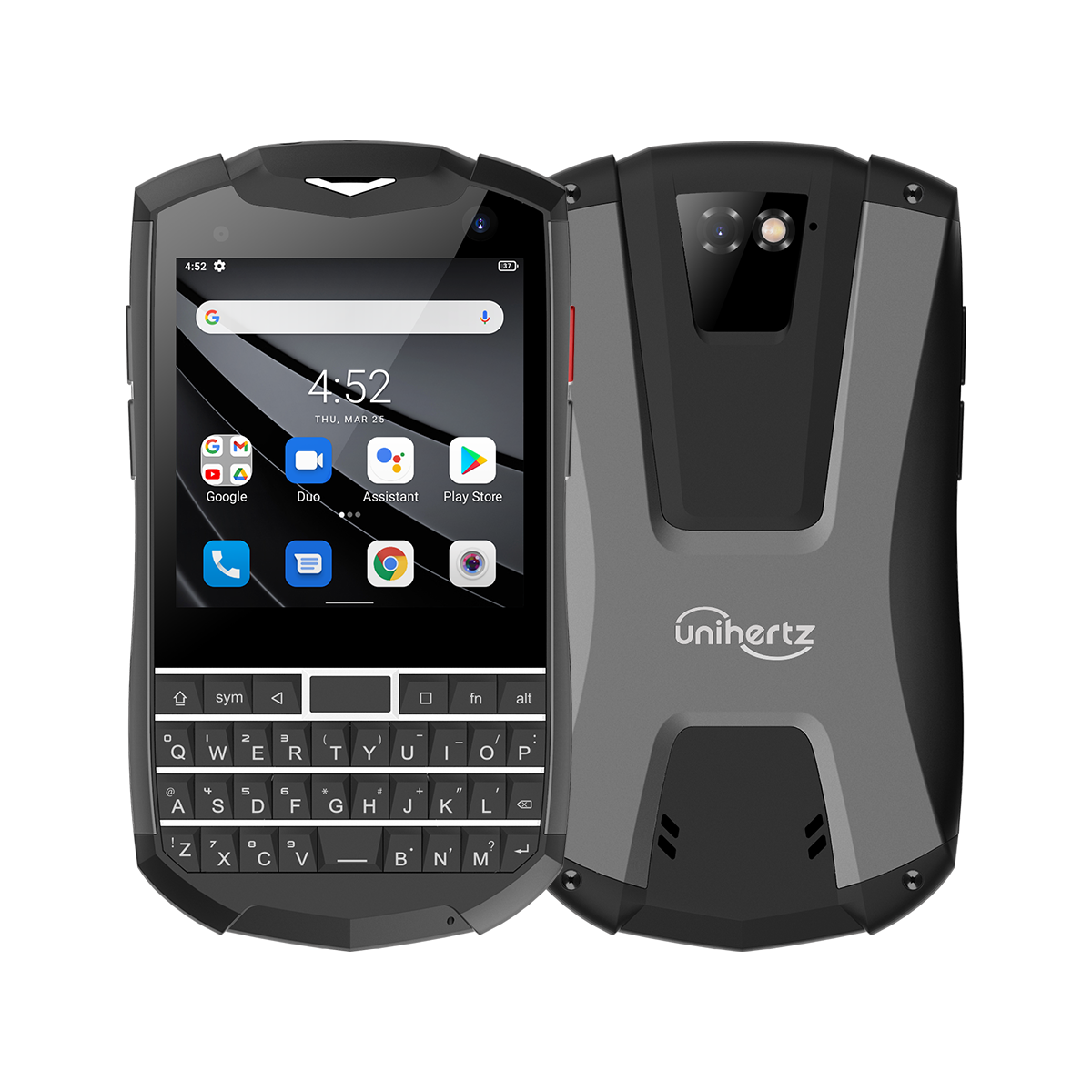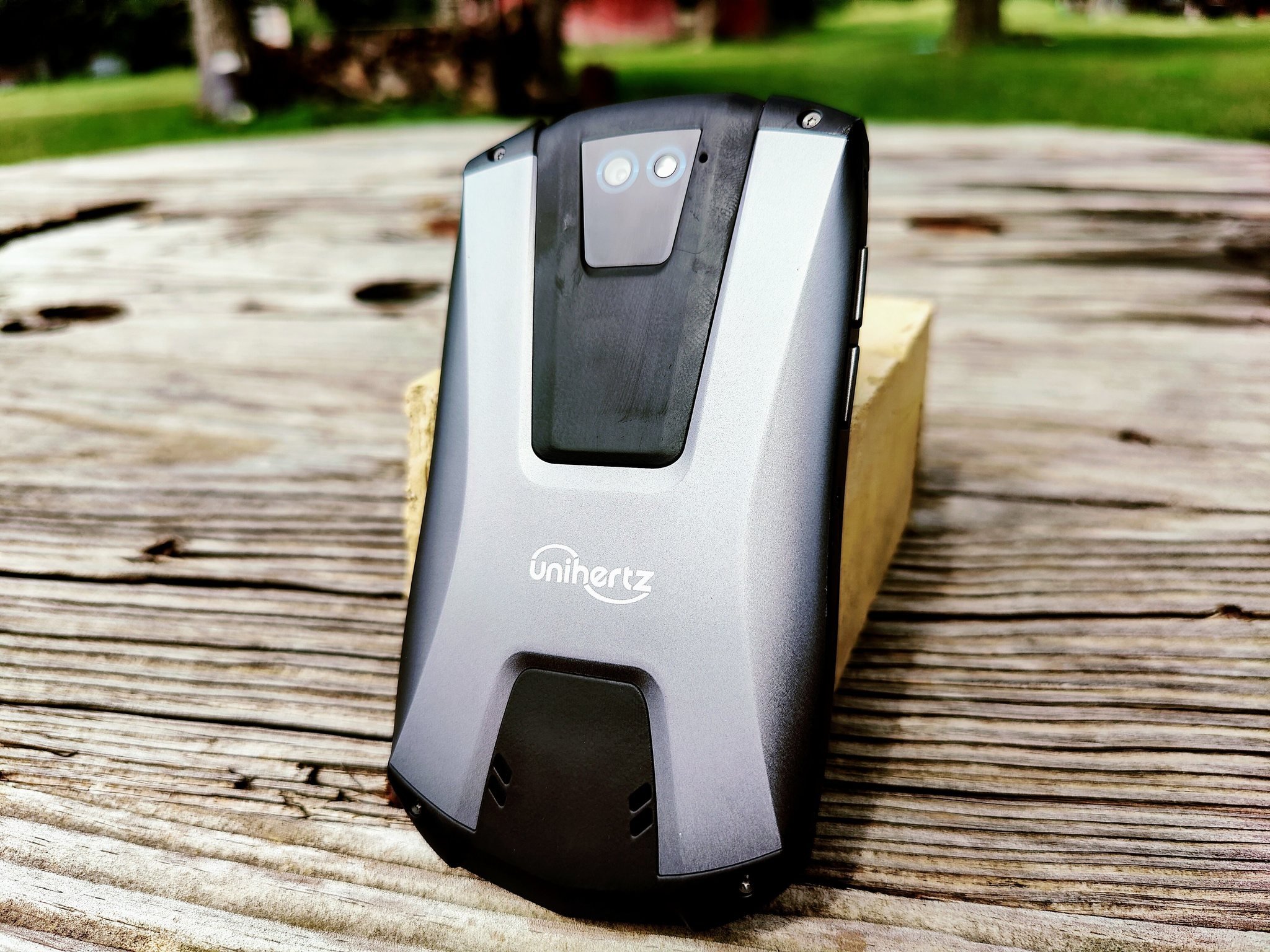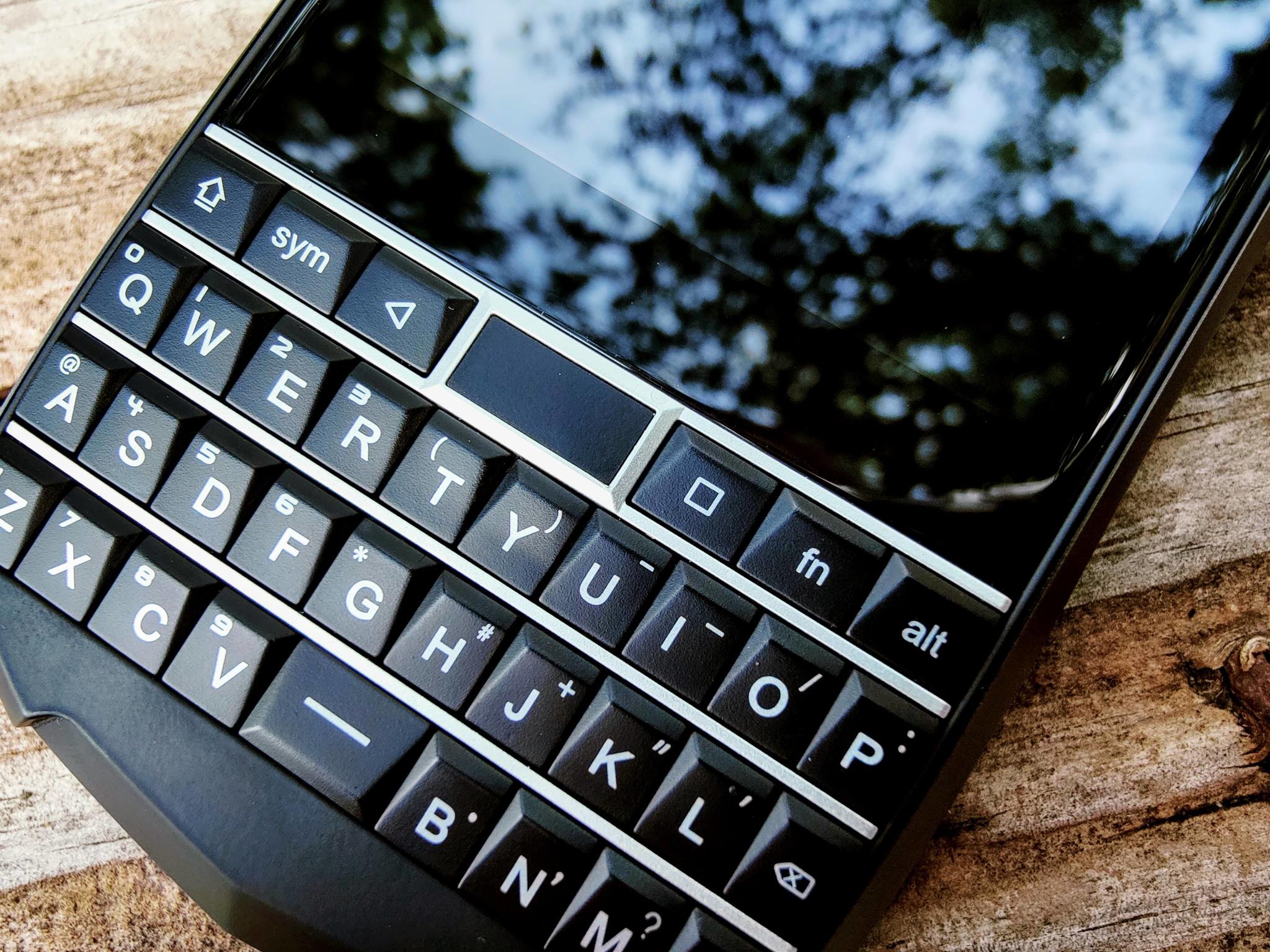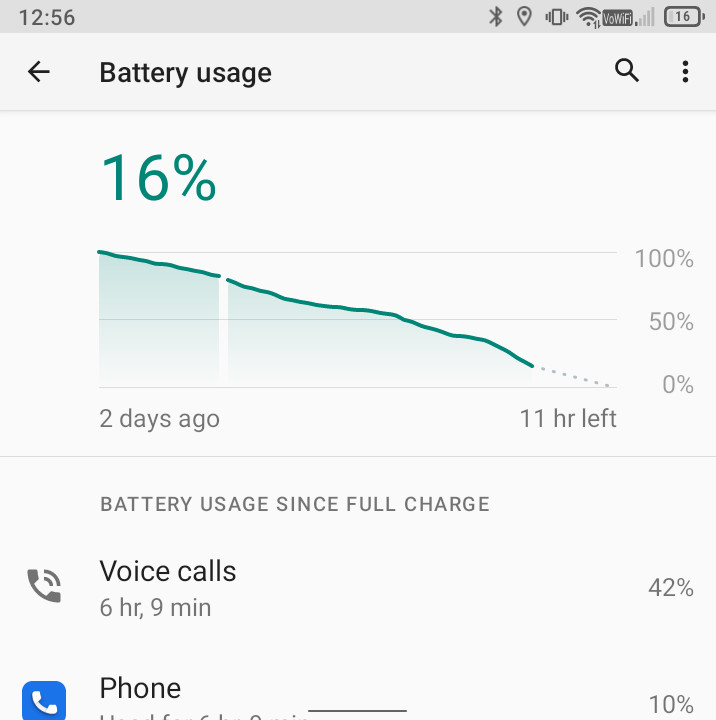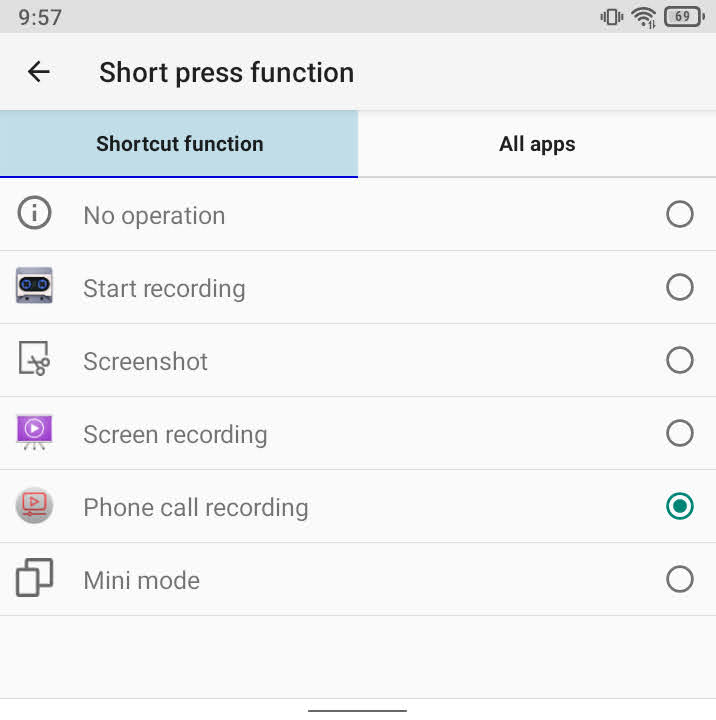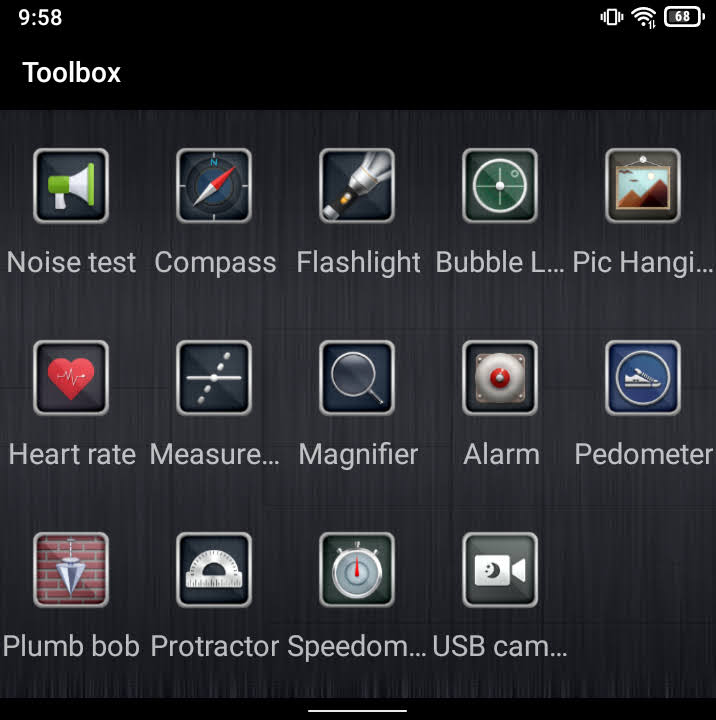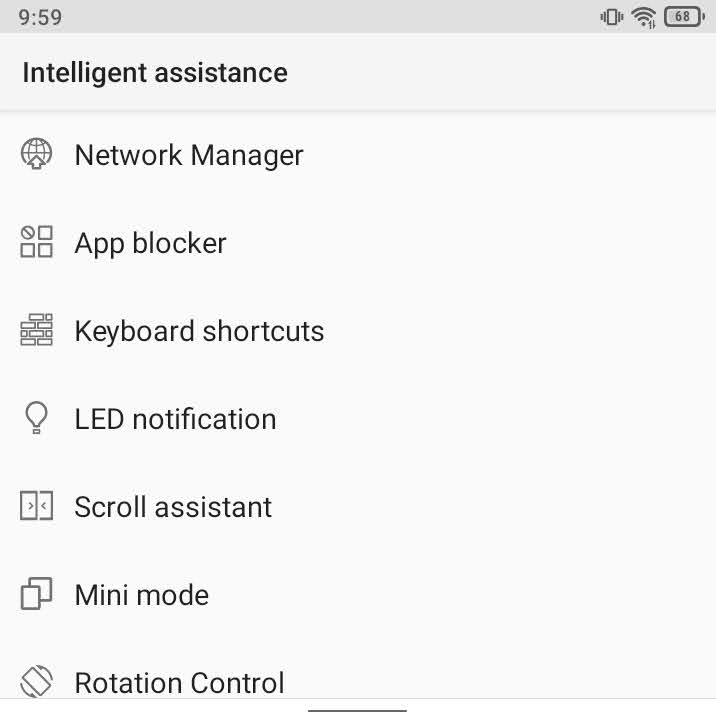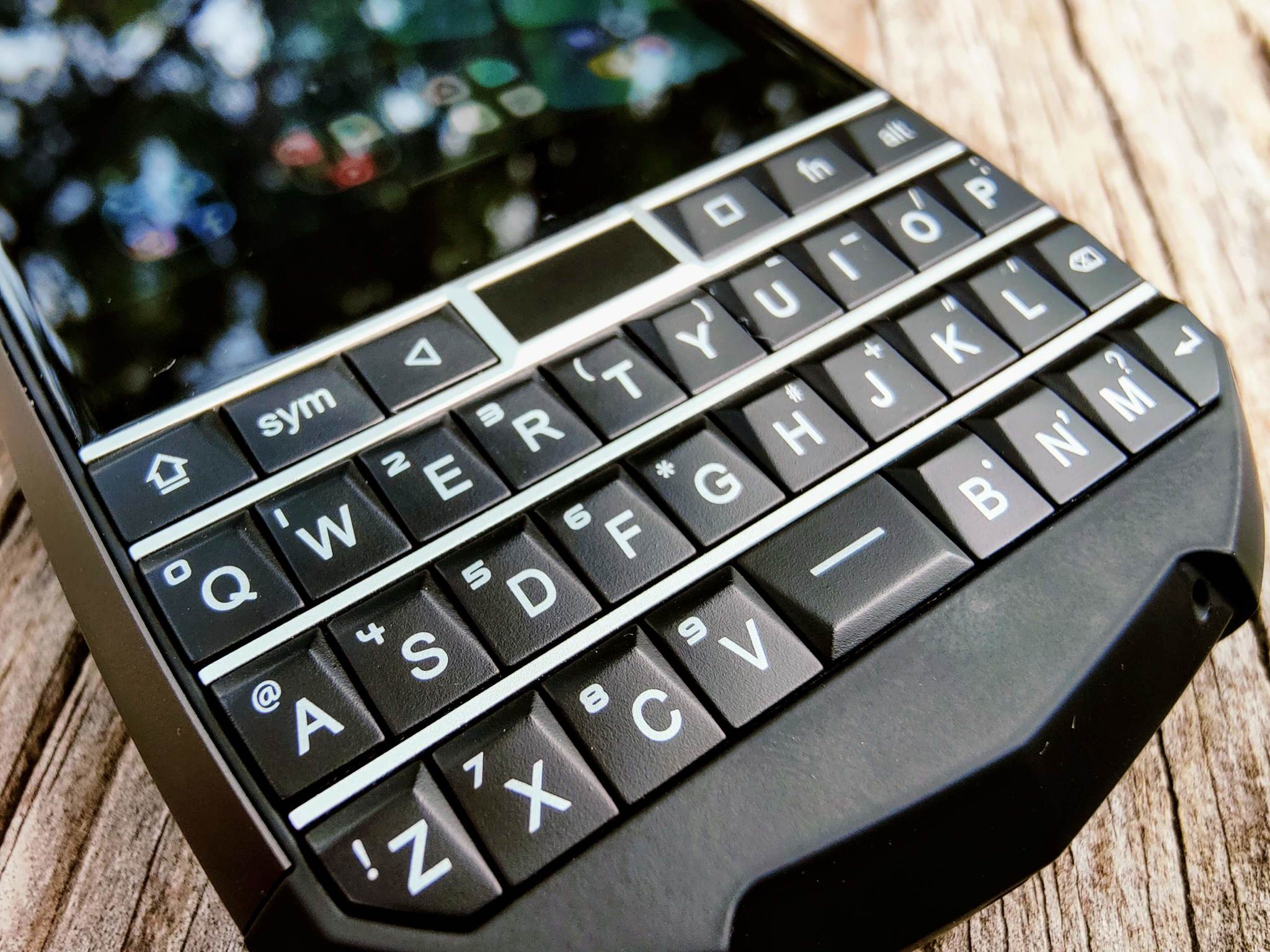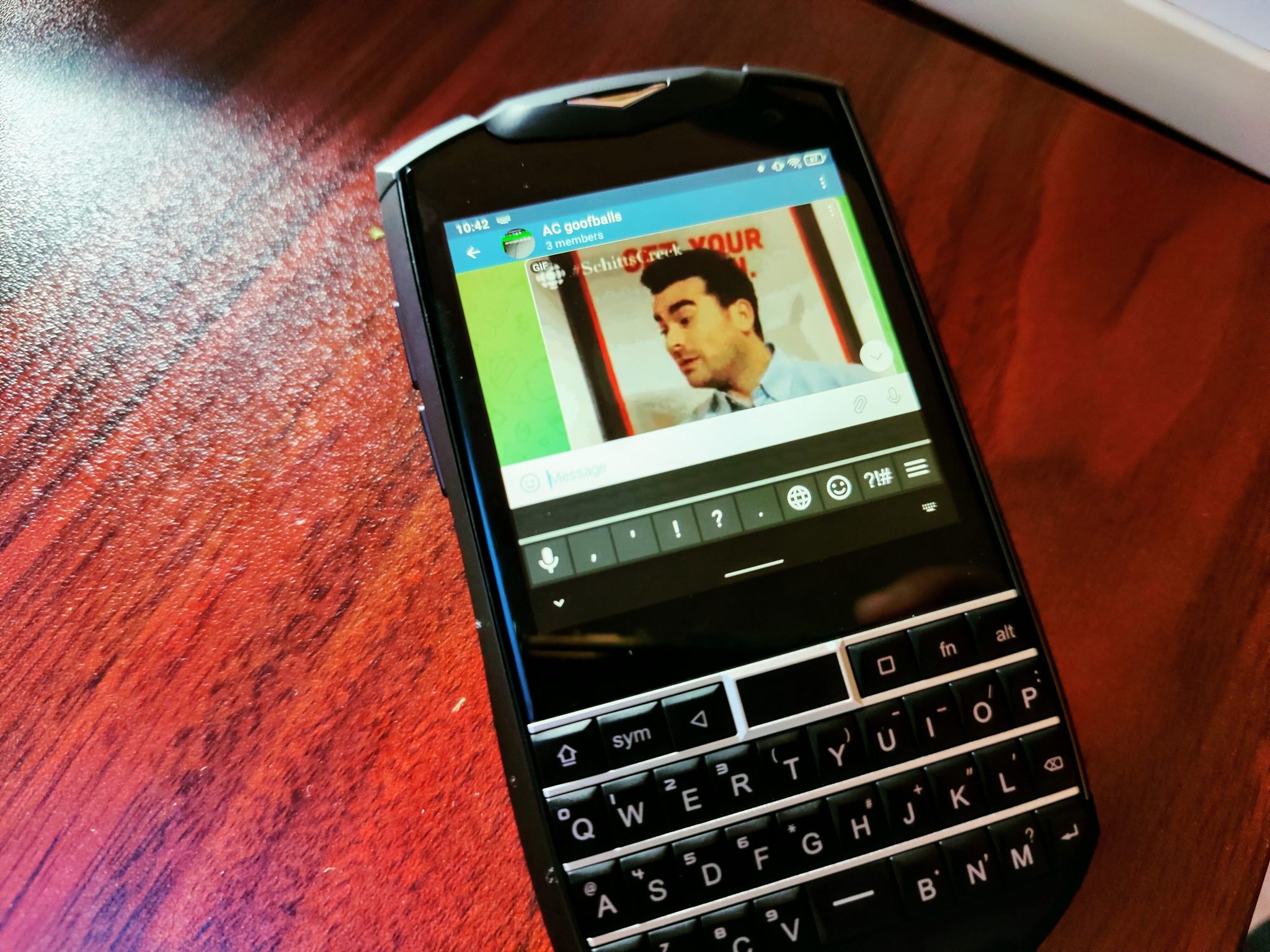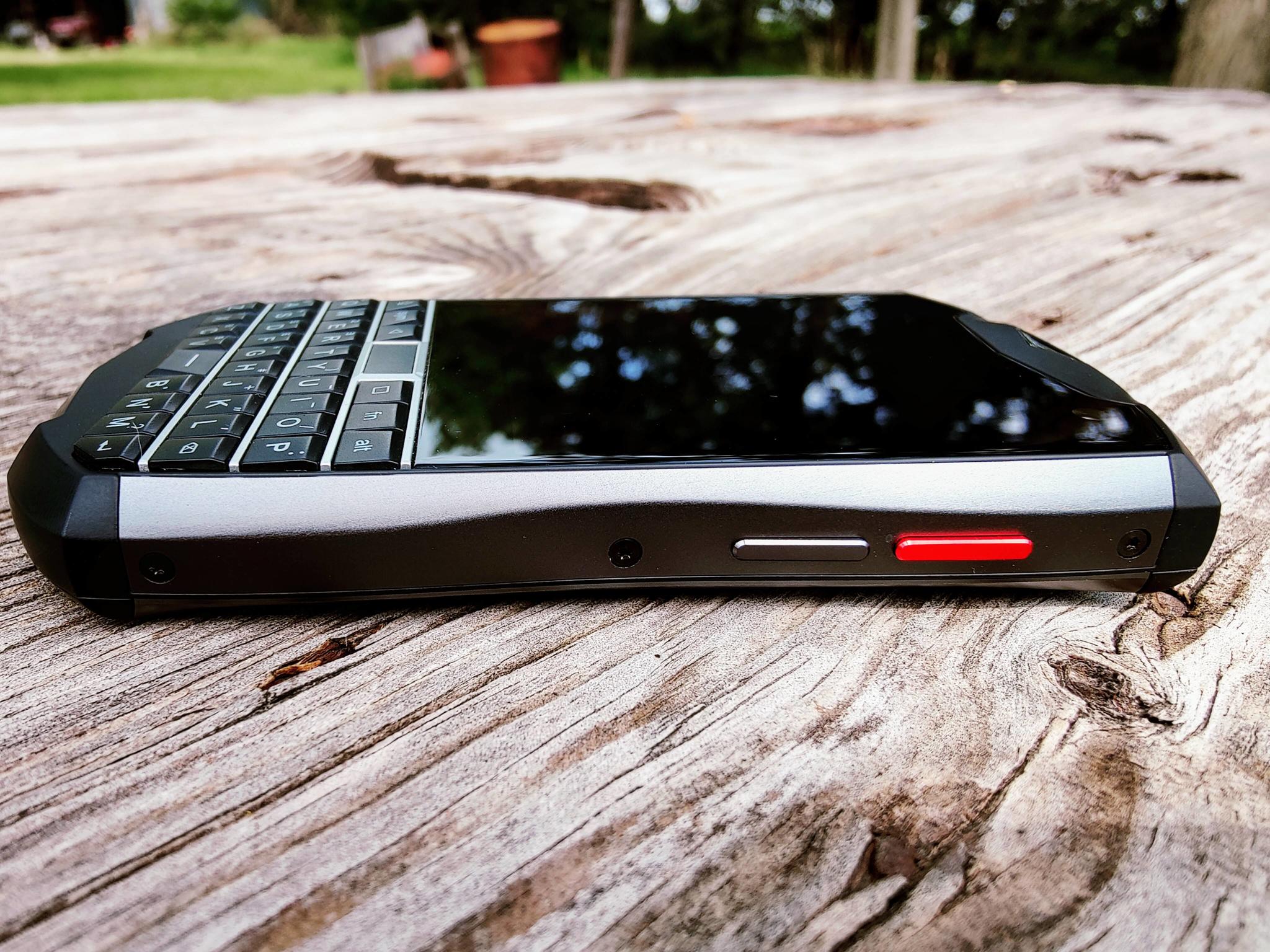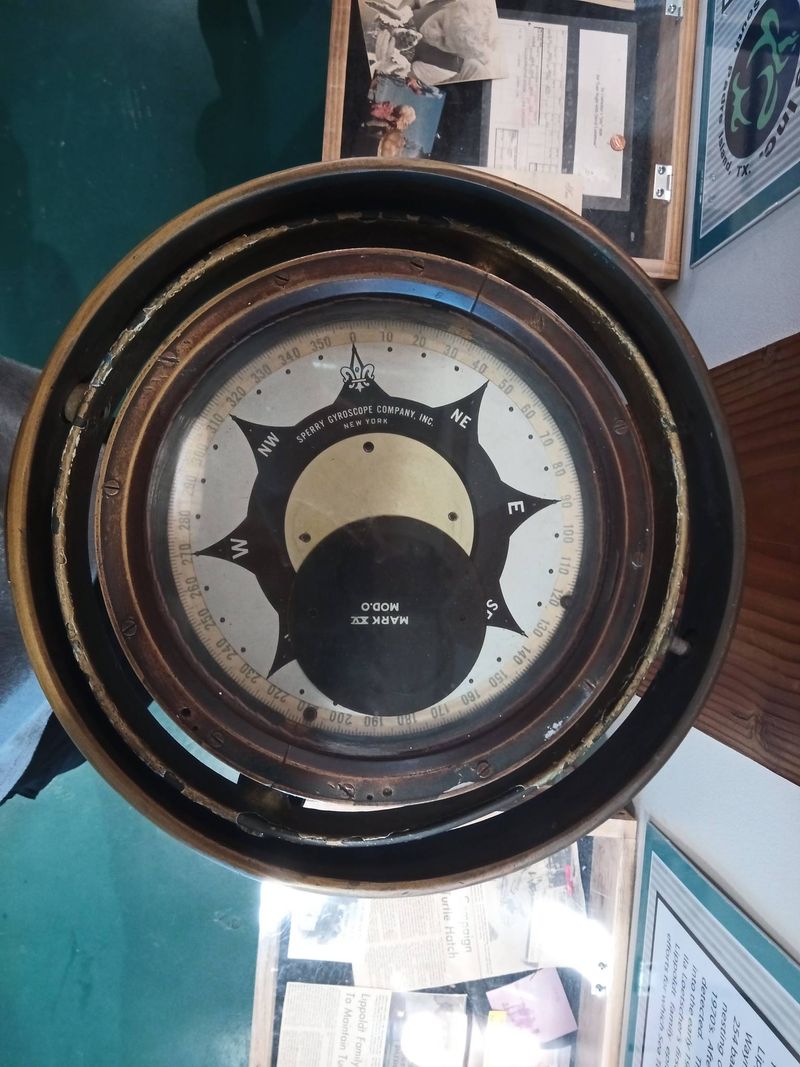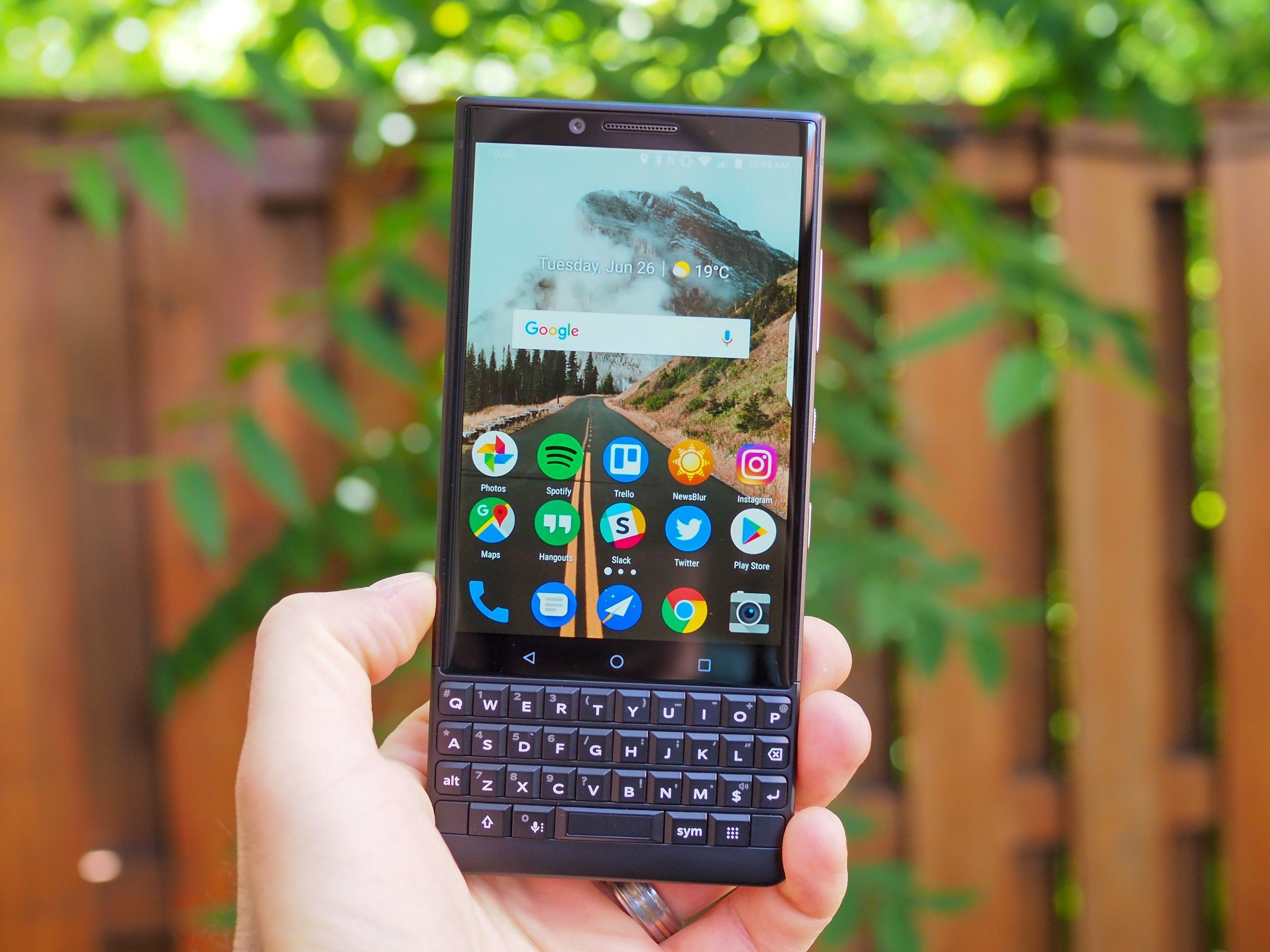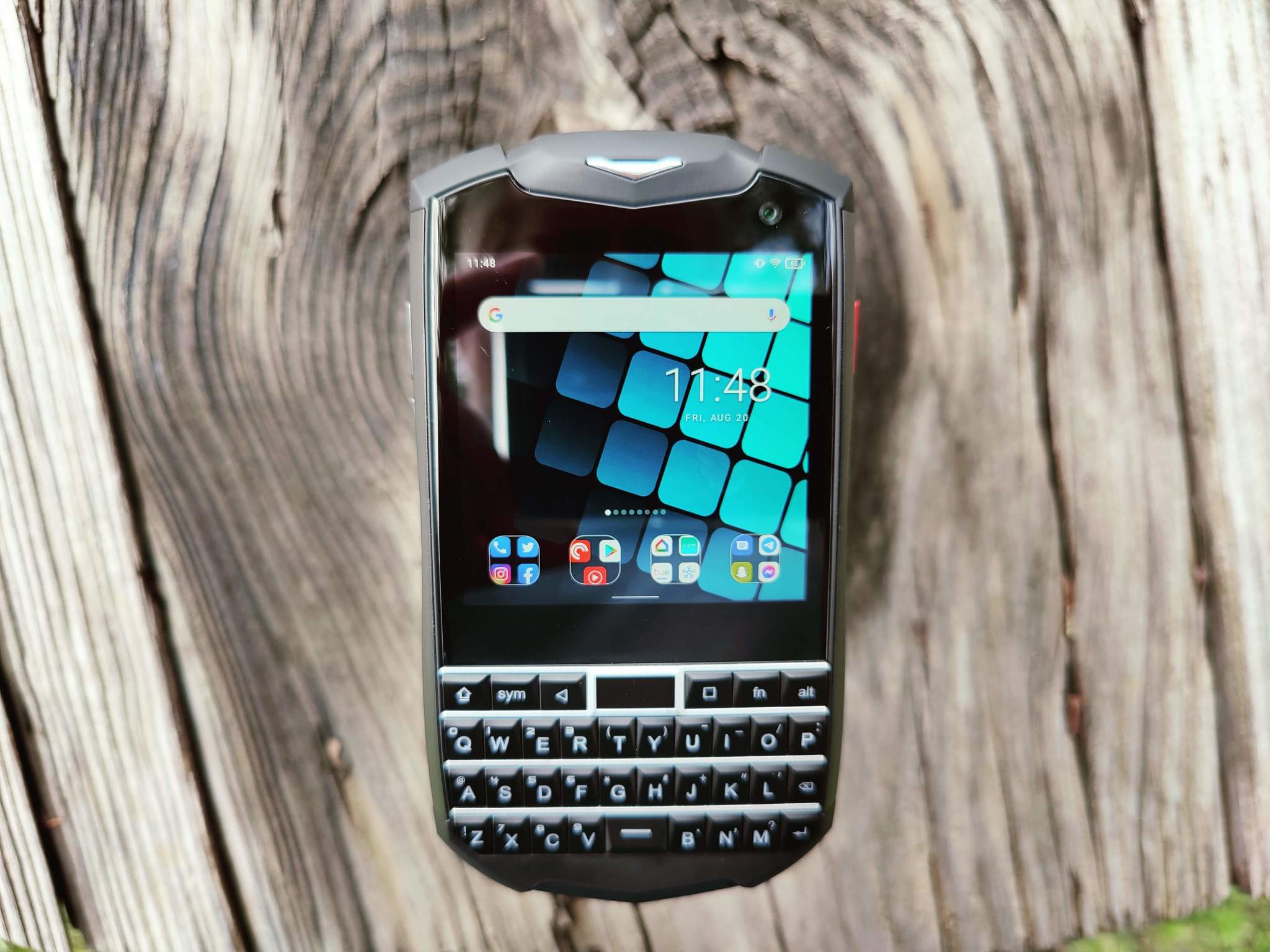The physical keyboard has a lot of functionality and can help you get a lot done — if you can use it in its cramped form.
My first taste of the smartphone world came back in 2007 with the Blackberry Curve 8310. After using old-school flip phones (not the fancy versions like the Samsung Galaxy Z Flip 3) and the candy bar-style phones with T9 typing, the full QWERTY keyboard on the Blackberry was amazing. However, the rise of Apple and Android smartphones, along with excellent on-screen keyboards, put a damper on the Blackberry party. But, the Unihertz Titan Pocket, running Android 11 and sporting a physical keyboard, is looking to satisfy the desire for a BlackBerry resurgence.
Borrowing much of what made the keyboards on phones of yesteryear so great, the Titan Pocket brings a lot of tricks to those buttons aside from simply typing out a message. The keyboard isn't the only thing the Unihertz is hoping will draw smartphone users to its device.
The battery to phone size ratio is great considering the entire phone is under 6-inches tall and the battery is powering a smaller, lower-resolution display. You'll find snappy overall performance even out of the older processor. But can those things overcome the less-than-great cameras and cramped keyboard due to the small footprint of the phone? Let's see how I got along with the Titan Pocket over my testing period.
Unihertz Titan Pocket
Bottom line: The Titan Pocket is here for those longing for a phone with a physical keyboard. The plenty of battery to get multi-day use between charges, and the customizable shortcuts will help you stay productive. However, typing can be difficult for those with bigger hands, and the small display leaves a lot to be desired — as do the cameras.
The Good
- The keyboard is multi-functional
- Excellent battery life
- Useful customizable side button
- The notification LED is great to have
The Bad
- Typing on the keyboard is cramped
- The display is too small
- It is a heavy and thick phone
- The cameras are barely serviceable
- Uncertain about software updates
Pre-order for $299 at Unihertz
Unihertz Titan Pocket: Price and availability
The Unihertz Titan Pocket launched on Kickstarter on May 18, 2021, and was fully funded when the campaign ended on June 18, 2021. The Titan Pocket is currently up for pre-order with a $299 MSRP on the Unihertz website.
Unihertz Titan Pocket: What's good
In a world where smartphones keep getting bigger and bigger, the Unihertz Titan Pocket zigs where all other devices are zagging. Instead of competing with the larger phones with massive spec lists, you get a phone that tries to give as much functionality as possible in a smaller form factor.
The black plastic and aluminum-clad device is as durable as it feels — there's absolutely no creaking or flexing of plastic when using the phone. Even though the Titan Pocket is small in stature, the space available inside is well used to fit in a 4000mAh battery that contributes to the phone's heft. Though a battery cell of this size isn't necessarily large when compared to other current smartphones, it is when the physical dimensions of the Titan Pocket come into the picture. This helps this phone make a case to sit among the Android phones with the best battery life.
A set of dimensions that isn't in that same boat as other modern smartphones would be the size of the display. The display takes up about two-thirds of the phones' frontside while the physical QWERTY keyboard fills the remaining space.
| Specs | Unihertz Titan Pocket |
|---|---|
| Dimensions | 5.22 x 2.88 x .66 inches |
| Weight | 216g |
| Battery | 4000mAh |
| Display | 3.1 inches (716 x 720) |
| Colors | Black and silver |
| Memory | 6GB RAM 128GB microSD expandable |
| Processor | Mediatek Helio P70 |
| Operating System | Android 11 |
| Water and Dust resistance | ❌ |
| Camera | 8MP front 16MP rear |
| Connectivity | Bluetooth 4.1 Wi-Fi NFC dual SIM LTE |
| Sensors | G-sensor Gyroscope Proximity Ambient light Compass Fingerprint sensor |
| Location | GPS Beidou Glonass |
| Other | Infrared blaster FM radio 3.5mm headphone jack |
The Titan Pocket's keyboard will look very familiar to those who have used a Blackberry before. Unihertz has done a great job of finding ways to get as much functionality from the keys as possible. The entire keyboard can be used as a trackpad for scrolling through Twitter feeds or Chrome. Each key can be programmed for up to two shortcuts through either a long or short hold.
Since this phone runs Android 11, it has all of the same features you'd expect a smartphone in 2021 to have, like gesture navigation. But, in keeping with making the Titan Pocket do as much as possible in the little space that's available, the largest key at the top of the keyboard is not only a capacitive fingerprint reader — it's also the home button. It is flanked by the back and multitasking buttons to give users physical keys for getting around the phone's UI.
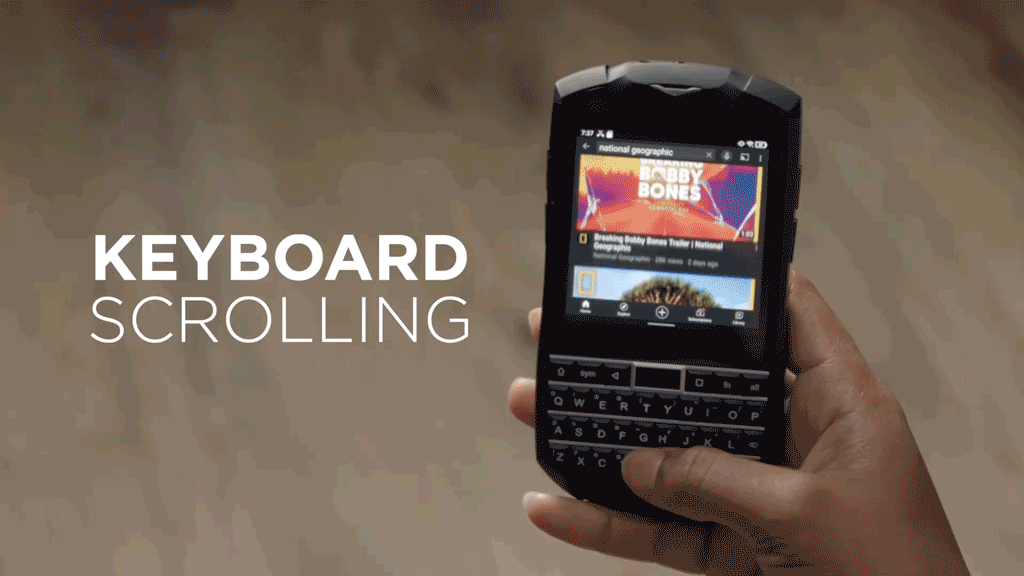
Each phone side has two buttons — volume on the left, with power and a red multi-function button. Much like the keys on the keyboard, you can set up to three functions for this hardware button to let you quickly do things like access Google Assistant, turn on the flashlight, and so many more.
Overall performance of the Titan Pocket was good. Even though the MediaTek processor it uses is from 2019, it had no problems thanks to the 6GB RAM. Scrolling through Twitter or moving between apps was snappy, and rarely (if ever) was there any lag. I wouldn't say the same for playing many games, but that isn't what the point of this phone is.
The Titan Pocket is a phone that is for getting things done first, and being a media consuming device a distant second.
The more I used the phone, the more I started thinking of it as a tool. Its goal is to help the user be as productive as possible. In some instances, the small display is a downfall, but in the case of limiting distractions of endless YouTube videos or getting sucked into one of the best Android games, the Titan Pocket succeeds. There's literally a pre-loaded folder of apps called Toolbox that has everything from a bubble level to a protractor.
Being able to type out a message and then jump to a specific app by using a custom shortcut you assign to a key all without ever taking your fingers off the keyboard is productivity and efficiency at its peak. Heck, even when you aren't actively using your phone, you can save time from picking it up to see if you have any notifications, thanks to the LED notification light.
Unihertz Titan Pocket: What's not good
That small stature is also part of its downfall for all the good about Titan Pocket's size. A physical QWERTY keyboard has plenty of positive notes for it; many of those are overshadowed due to the space allowed on this phone. To put it simply, typing on the keyboard is not an enjoyable experience.
It feels very cramped when trying to type out a message, and even though there is pretty good separation between keys, it's tough trying to feel where each key is without looking because it's just so small. I have pretty large hands, but even my wife with significantly more dainty digits said the keyboard felt smushed in.
I wish I could say the keyboard on the Titan Pocket made me want physical keyboards to be mainstream again, but it really does the opposite.
Aside from the uncomfortable typing experience, the layout is a bit confusing as well. All of the function keys, like shift and alt, are at the top of the keyboard. So while typing is familiar thanks to the standard QWERTY layout, with those functional keys not being where you're used to them, it gets frustrating quickly.
Another part of the phone that loses some of its functionality due to being small is the display. Most Android apps aren't designed with a 3.1-inch screen in mind, and thus many times, information or images aren't viewable in their entirety — not without scrolling. Even worse is when typing.
I don't mean trying to type on the virtual keyboard board because that is useless because it takes almost the entire display. I'm referring to using the physical keyboard. Even when you aren't using the on-screen option, a small bar still takes up part of the screen, making a small viewing area even smaller.
The Titan Pocket's solid build and hefty feel is a bit of a double-edged sword because it also contributes to an uncomfortable typing experience. Because the phone is so small and the keyboard is pushed to the very bottom of the phone, it makes the Titan Pocket very top-heavy when typing. As a result, there were times I dropped the phone when trying to type or shift my hands to get the top row of buttons.
That thickness and weight also are quite noticeable when carrying the phone around. Whether it's in your bag or pocket, there's no confusion about whether you have your phone with you or not. I supposed that could be a positive also because it means you may be less likely to leave it behind unless you are just tired of carrying it.
While I mentioned earlier that this phone was a productivity tool first, that rings true in the camera department. The photos from the 16MP rear camera and 8MP front shooter do OK in good lighting, but they won't win any awards in any other situations. Even the good photos are lacking depth and detail.
I took the Titan Pocket with me on vacation to South Padre Island earlier this summer, not my sole phone for the trip, and decided to take it with me to a sea turtle refuge. Though I did manage to get a few photos that I found to be satisfactory, I am glad that my wife had her Pixel 5 to ensure we didn't miss out on any memories we wanted to capture.
Finally, there's the uncertainty of the software. The phone ships with Android 11; there's no saying whether it will get any updates in the future, and it's currently sitting on the April 2021 security patch to boot. I'm fairly confident in saying that it won't get any updates as the Unihertz Atom XL I reviewed last October is still on Android 10 with the September 2020 security patch.
Unihertz Titan Pocket: Competition
The competition is scarce for a phone with a physical keyboard these days, especially for the Titan Pocket's price. So if it's a phone with a full QWERTY keyboard that you are looking for, your best bet is to still look towards picking up one of the best Blackberry phones.
You'll get the best typing experience by going with the brand that perfected the physical keyboard on a phone, plus excellent security features. However, since Blackberry is no longer making phones, you'll likely have to pick one up second-hand and for more money than the Titan Pocket. There is hope, though, that if you can wait that a new Blackberry is on the way in 2021, though there is still little known about the device right now.
Unihertz Titan Pocket: Should you buy it?
You should buy this if ...
- You want a phone with a physical keyboard, and that's productivity-focused.
- You want a phone that has great battery life.
- Your phone is your only camera, and you care about photo quality.
You shouldn't buy this if...
- You have large hands and type a lot of messages.
- You use a lot of media-heavy apps.
- You want a phone that has software that's kept up to date.
The keyboard on the Titan Pocket is nice, given its size. The buttons have good travel and are clicky, and the ability to set custom shortcuts to keys and use the keyboard as a trackpad are all great features. However, because the phone is smaller, everything is cramped — especially the keyboard. The small screen makes apps like YouTube and Instagram tough to use. But, that display also means you'll get excellent battery life.
The Unihertz Titan Pocket is a very niche product, and that's OK. It means that a particular set of criteria will need to be met for the experience of using the phone to be a positive one. The keyboard packs a lot of use into its small form. By being able to use it as a trackpad, the small display is kept as open as possible for the viewability of your content.
However, much of that goes away when trying to type on the keyboard, thanks to the virtual shortcut bar that shows up. If you have larger hands, using the keyboard is difficult due to its cramped size. You'll be able to get multi-day battery life and an easily pocketable device. But the lack of future software support could be an issue.
Much of the Titan Pocket is a give-and-take situation. For every good thing that comes from being a smaller device, there's a downside to it. If there weren't a physical keyboard, the small size wouldn't be so much of a downer, but that keyboard is part of the selling point for those who miss physical keyboards on their phone.
Unihertz Titan Pocket
Bottom line: The Titan Pocket is a phone that isn't trying to take down the $1000 phones but offers a lot in the way of productivity in ways those phones don't. Its long battery life and multi-functional keyboard can help you get more done when you're mobile. But, typing can be difficult on the cramped keyboard, and lack of future software support can damage the experience.
Source: androidcentral
